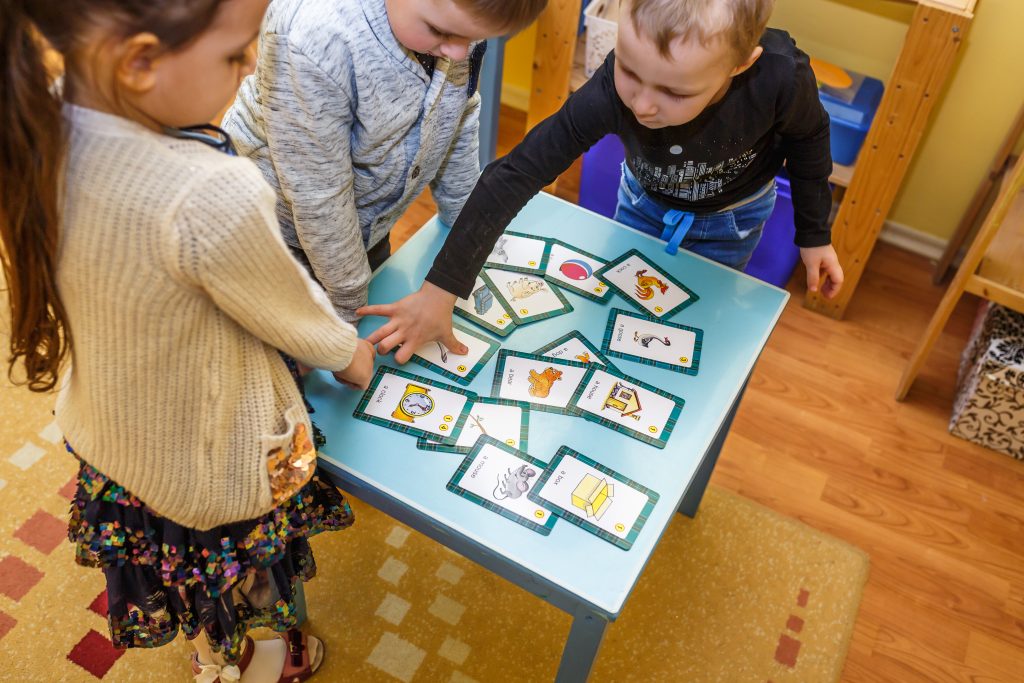Picture this: a table adorned with colorful game boards, a deck of cards waiting to be shuffled, and eager faces filled with anticipation. In this discussion, we will uncover practical tips and strategies to guide you through the process of introducing and teaching board games to your children. But that’s not all. We’ll also delve into the hidden benefits of board games, the skills they cultivate, and the joy of fostering a love for tabletop gaming in your little ones. So, fasten your seatbelts and get ready to embark on an adventure that blends learning, fun, and quality family time.
Choosing Age-Appropriate Games
Are you wondering how to choose age-appropriate games for your kids? It’s essential to consider their developmental stage and interests when selecting games. Age appropriate selection is key to ensuring that your children can fully engage and enjoy the game. Look for games that are specifically designed for their age group, as these will have rules and gameplay mechanics that are suitable for their abilities.
When introducing a new game, take the time to provide clear rule explanations. Break down the rules into simple, understandable terms, and be patient in answering any questions they may have. To help them grasp the game mechanics, effective gameplay demonstrations can be beneficial. Show them how to play by playing a round together or by watching videos that demonstrate the gameplay.
Promoting fair play is vital in teaching kids board games. Encourage them to play by the rules and emphasize the importance of good sportsmanship. Teach them to take turns and respect the decisions made during the game. Practice opportunities are also crucial in helping them improve their skills. Set aside regular game nights or practice sessions where they can play and reinforce what they have learned.
Explaining Rules and Objectives Clearly
When explaining the rules and objectives of a board game to kids, it is important to provide clear and concise instructions that are easy for them to understand and follow. Effective communication is key in ensuring that children grasp the concepts of the game. Start by using age-appropriate language and avoiding complex jargon. Break down the rules into simple steps, giving examples and using visual aids if necessary. Make sure to emphasize the objectives of the game and how to achieve them.
Strategic demonstrations can also be helpful in teaching kids board games. Show them different strategies and explain the thinking behind each move. This will help them understand the game’s strategy and develop their own critical thinking skills.
It is equally important to teach kids about sportsmanship and fairness while playing board games. Emphasize the importance of playing by the rules, respecting opponents, and accepting both victories and defeats gracefully. Encourage them to congratulate others on their successes and offer support when they face challenges.
Lastly, provide plenty of practice opportunities for kids to reinforce their understanding of the rules and improve their gameplay. Allow them to play the game multiple times, gradually increasing the difficulty level. This will help them gain confidence and become more skilled players.
Demonstrating Gameplay Strategies
To effectively demonstrate gameplay strategies to kids, it’s important to show them different tactics and approaches that can help improve their gameplay and increase their chances of success. Teaching tactics is a crucial aspect of board game instruction, as it helps children develop strategic thinking skills and make critical decisions during gameplay. By teaching kids how to analyze opponents and anticipate their moves, they can enhance their problem-solving skills and become more adept at adapting their strategies.
One way to demonstrate gameplay strategies is by providing examples and scenarios that highlight different approaches to the game. You can explain the thought process behind each move and discuss the potential outcomes. Encourage kids to think critically and consider multiple options before making a decision. Emphasize the importance of observing and analyzing the actions of their opponents to gain an advantage.
Engage kids in interactive discussions about the game and ask them questions to encourage strategic thinking. Encourage them to come up with their own strategies and explain their reasoning behind them. This will not only help them improve their gameplay but also foster their creativity and confidence in making critical decisions.
Encouraging Sportsmanship and Fair Play
Now that you’ve learned how to demonstrate gameplay strategies to kids, let’s talk about the importance of encouraging sportsmanship and fair play during board game sessions. Teaching etiquette and instilling values through board games is crucial for their development. By fostering teamwork and promoting good sportsmanship, you can cultivate an environment of fair play. Here are three reasons why this is so important:
- Building Character: Playing board games provides an opportunity to teach kids valuable life lessons. By emphasizing the importance of fair play, you can help them develop integrity, honesty, and respect for others. These qualities will benefit them not only in gaming but also in their interactions with peers and adults.
- Promoting Healthy Competition: Board games teach children how to win and lose gracefully. By guiding them during gameplay, you can teach them the value of healthy competition. Modeling prosocial behaviors, such as congratulating opponents and being a good loser, helps them understand that winning is not everything and that the process of playing is equally important.
- Enhancing Social Skills: Board games provide a platform for children to practice essential social skills. Taking turns, following game rules, and understanding different perspectives are all crucial aspects of good sportsmanship. By playing board games, kids can improve their verbal skills, develop patience, and learn how to collaborate effectively with others.
Providing Opportunities for Practice
One way to encourage kids to practice good sportsmanship and fair play during board game sessions is by creating opportunities for them to reflect on their behaviors and make positive changes. Providing opportunities for practice not only helps them improve their gameplay skills but also fosters a sense of accountability and self-awareness. Engaging gameplay techniques and hands-on experience are essential for effective learning.
To promote interactive learning, you can set up skill-building activities that focus on specific aspects of the game. For example, if you’re playing a strategy game, you can organize practice sessions where kids can work on their decision-making skills and develop effective strategies. These practice sessions allow them to experiment with different approaches and learn from their mistakes.
Another way to provide opportunities for practice is by encouraging kids to play the game with different opponents. By playing against different people, they can experience different play styles and learn to adapt their strategies accordingly. This not only improves their gameplay skills but also teaches them how to interact with others and handle different situations.
Creating a supportive and encouraging environment during practice sessions is crucial. Give constructive feedback and praise their efforts. Encourage them to reflect on their mistakes and find ways to improve. By doing so, you help them develop a growth mindset and a willingness to learn from their experiences.
Creating a Fun and Engaging Learning Environment
As you continue to foster good sportsmanship and fair play during board game sessions, it’s important to create a fun and engaging learning environment that keeps kids excited and motivated to learn and improve their gameplay skills. Here are some strategies to incorporate into your board game sessions:
- Incorporating interactive elements: Encourage active participation by incorporating interactive elements into the gameplay. For example, you can use question cards that require players to answer trivia questions or perform physical challenges to move forward in the game.
- Using visual aids: Visual aids such as colorful game boards, illustrations, and charts can enhance the learning experience and make it more engaging for kids. Visuals help them understand game mechanics, strategies, and concepts more easily.
- Incorporating storytelling elements: Infuse storytelling elements into the gameplay to spark imagination and create a more immersive experience. You can encourage players to create backstories for their characters or develop narratives based on the game’s theme.
Adapting Games for Different Learning Styles
To adapt games for different learning styles, consider incorporating various strategies that cater to individual preferences and strengths. One strategy is incorporating sensory elements into the gameplay. For example, you can use textured game pieces or add sound effects to engage kinesthetic and auditory learners. Another strategy is using visual aids, such as charts, diagrams, or color-coded cards, to assist visual learners in understanding game concepts. Utilizing hands-on activities is also effective for tactile learners. You can provide manipulatives or props that allow them to physically interact with the game components. Implementing cooperative gameplay is beneficial for social learners who thrive in group settings. Encourage collaboration and teamwork by incorporating cooperative elements or team challenges into the game. Lastly, modifying rules for individual needs is important. Consider adapting rules or creating alternative gameplay options to accommodate different skill levels or learning abilities. By incorporating these strategies, you can ensure that all children, regardless of their learning style, have an enjoyable and inclusive gaming experience.

















